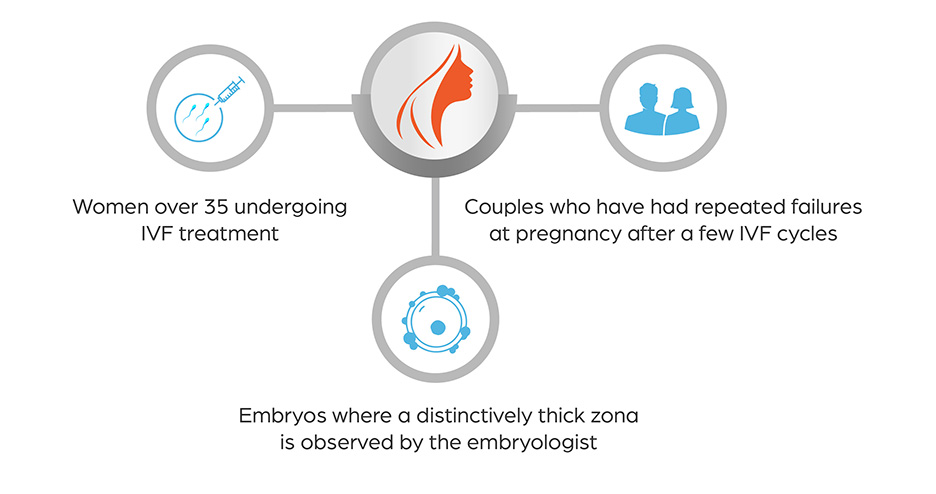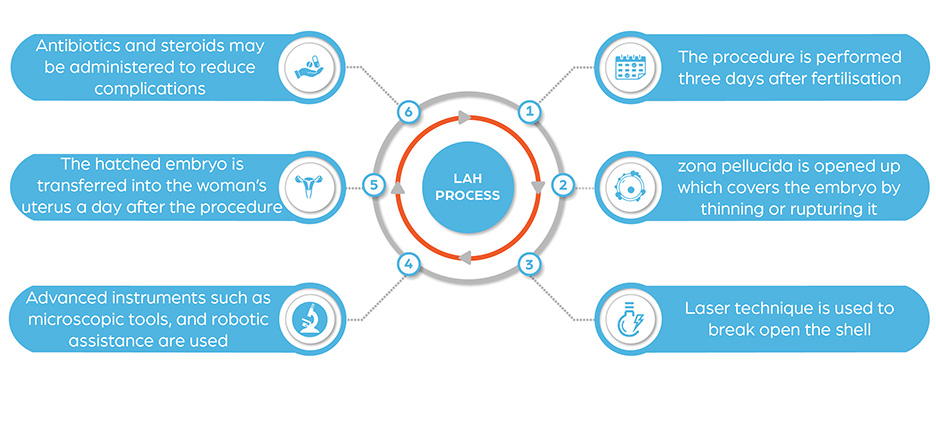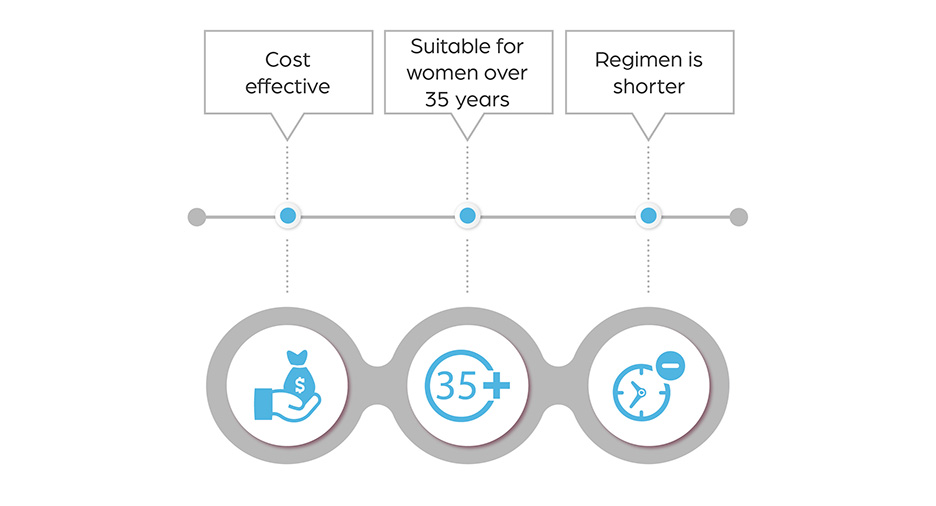LASER ASSISTED HATCHING OF BLASTOCYST
Using a laser, an opening is made in the zona. A single cell is gently removed with a pipet. At this stage, the cells are totipotent – every cell of the embryo can form all parts of the body. Therefore, the removal of one or two cells does not hinder the development of the baby. The cell is carefully fixed on a microscopic slide and then analyzed by the FISH technique.
Fertilization in IVF treatments occurs inside a lab and women who have undergone IVF treatment know that having a fertilized embryo doesn’t mean pregnancy is guaranteed. The transferred embryo has to implant or “stick” successfully into the endometrium for them to get pregnant. It is seen that about 85% of transferred embryos do not implant.
One of the reasons for this is that the embryos do not hatch properly, hence fail to implant. It could happen due to various other factors such as the shell being unusually hard, or factors like the cultures for the embryos or the cryopreservation chemicals that could have interfered with the hatching.
The role of assisted hatching during IVF treatments is to aid in the process of embryo hatching, so the chances of implantation are increased.
TO WHOM TO ADVICE

STEPS FOR PROCEDURE

ADVANTAGES

RISKS

